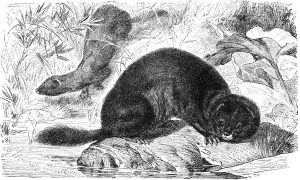 Pest Control Services
Pest Control Services
The best approach to dealing with mink, weasels or stoats is to fence them out, but the problem is that they are able to get in through small apertures, such as the gaps in ordinary netting.
A smooth fence such as galvanised sheeting is effective, for they are unable to get a grip on it, but it is fairly unsightly as a barrier. Trapping is also used where mink is a problem.
A proprietary repellent is sometimes effective. Soaking rags in diesel oil and hanging them on the boundary has also been known to work.
Predatory Birds
Overhead predators such as hawks can prey on small fowl, as well as frighten large ones. The traditional method of dealing with them was horrifically inhumane. Baited gin-traps were placed on top of high poles. When the unwary bird came down to retrieve the bait, the trap would snap shut on its legs. Thankfully, the gin-trap has been illegal for many years.
Birds of prey are protected species and must not be trapped or shot, although there are unscrupulous gamekeepers who undoubtedly do so. The only legal approach is to deter them but how is this possible?
In a small area, close-woven plastic meshing such as that used on top of fruit cages can be used to provide over-head protection. It is effective in a small run where, for example, young growers are being reared. For larger areas, where this is not a practical proposition, the humble scarecrow is worth considering, as well as the placing of aluminium foil strips on posts or lines where they will be moved by the wind.
The key factor is moving such deterrents and scarecrows at regular intervals so that the predators do not become used to them.
Larsen Traps
Larsen traps are often used where magpies are a nuisance. They are live-catch cages in case other wild birds are caught. The latter must, of course, be released immediately for it would be illegal not to do so.
Shelter
Having shelters where poultry can run to hide under when they are away from their house is a good idea, and indeed required for commercial free-range flocks. Chickens have good all-round vision and will soon spot a bird of prey. Ducking under a shelter is their only protection in the absence of the trees to which their Jungle Fowl ancestors were adapted.
Such shelters are easy to make. A few straw bales with a sheet of ‘galvanised’ on top are effective, although admittedly not very pretty. More attractive ones can be made from wattle hurdles or woven branches.
Mirrors that reflect the light upwards can sometimes frighten away a bird of prey. There are also purpose-made raptor deterrents in the form of a ball mirror glass or even wind-powered, flashing hawk faces.
Article taken from original work by Katie Thear, with permission of the publisher.
Further Articles of Predator Protection
- Dealing with Rat Infestations: Protecting the Poultry Flock
- Electric Fences Protecting the Poultry Flock from Predators
- Foxes & Fences: Protecting the Poultry Flock from Foxes
- Larger Predators & Thieves: Protecting the Poultry Flock
- Mink, Weasels, Stoats & Hawks Protecting the Poultry Flock
- Pest Control, Rats & Mice Protecting the Poultry Flock
- Pest Control, Traps & Deterrents Protecting the Poultry Flock against the Fox

